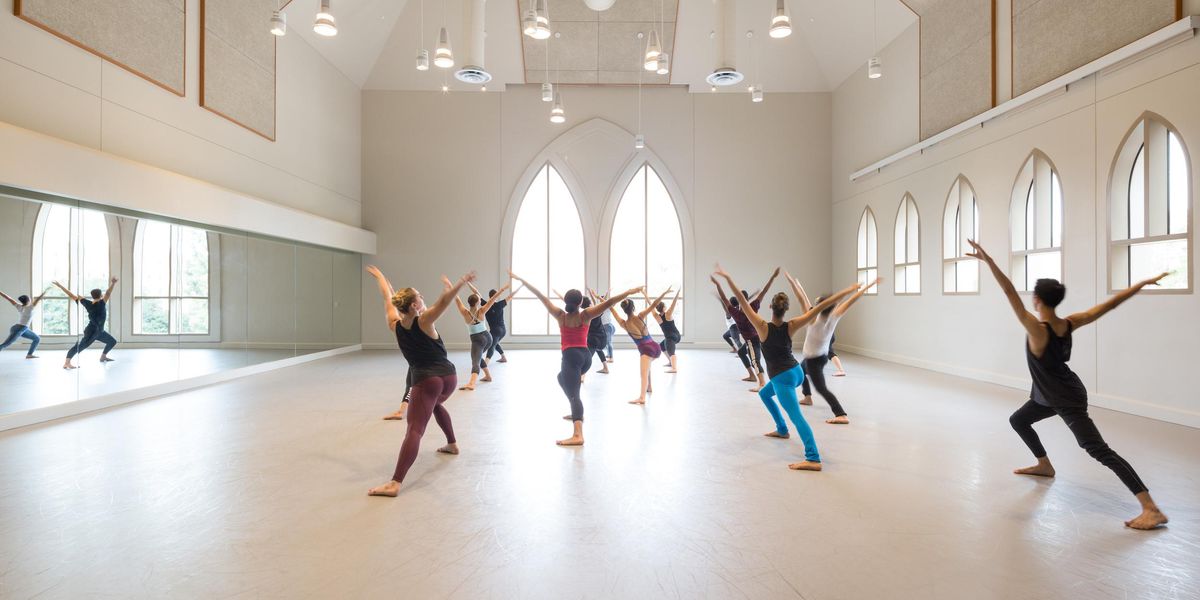The Bodies That Inspire
Ballet BC dancer Darren Devaney. Photo by Michael Slobodian, Courtesy Ballet BC.
Inspiration can come from anywhere, but for choreographers, the body itself is a rich source. Some dancemakers may be drawn to specific physical traits: lanky limbs, an articulate spine, a muscular build. But those features can’t move on their own. There’s always a heart, a mind, a spirit, a psyche—some form of inner life propelling what we see externally, animating what the body can do. Dance Magazine asked four choreographers: What body inspires you?
Bill T. Jones
Artistic director, Bill T. Jones/Arnie Zane Dance Company
We’re a company that started out with very eccentric bodies: Larry Goldhuber, Arthur Aviles, people like that. Some of the repertory has such a strong imprint from those dancers that you’re always looking for some version of it, though you don’t want to be shameless about trying to reproduce it. Of course, there aren’t many Larry Goldhubers with 300 pounds, but my company must always have a very large man, somebody with stature. Larry always made me feel small when I danced with him.
For the kind of movement we do, it’s good to have long arms, a supple back, to be able to find stillness in a way that’s hopefully not dead. We talk about the skeleton as rock-and-roll: the bones of the skeleton, the way you let your backbone slip. It’s first got to be strong, like a marionette, so you can articulate from some central point.
Shayla-Vie Jenkins is one example of that. I love her beauty. When Arnie and I started out, we never had a regal black woman with training. They were going to Mr. Ailey or somewhere else. But Shayla was attracted to my movement. Because of the length of her limbs, the way there’s something aloof about her, she can deliver abstract movement convincingly. That’s more about the quality of interpretation than the body, but the two work together in my mind.
Photo of Bill T. Jones, Courtesy NYLA.
Emily Molnar
Artistic director, Ballet BC
There’s not one body type that interests me. What interests me is a dancer who is fully engaged inside of their body. There’s no blockage, no insecurity. They’re confident in who they are, and you can sense it in the way they dance. That usually leads, for me, to a body that is strong, agile, vulnerable, expressive and can really move through three-dimensional space.
Ballet BC is reflective of that. Every one of the dancers looks very different. They’re not the same height; some are more muscular. What’s interesting to me is how a group of individuals works as a collective. I think that when everybody is a carbon copy it misses the point of what artistic expression is.
There’s a dancer in Ballet BC, Darren Devaney, who is very slight. One would think on first observation that he wouldn’t be able to partner, but he’s one of the strongest and most supple dancers I’ve seen. Some of the greatest artists I’ve seen are the dancers with more difficult bodies: Maybe they don’t have the greatest arched feet, or the most flexibility, or an enormous amount of rotation or that fabulous arabesque. But it can be more interesting to watch, because they’ve had to create a real understanding of how their body works and what they’re saying with it.
Photo of Emily Molnar courtesy Ballet BC.
Michelle Dorrance
Artistic director, Dorrance Dance
I like working with a diverse range of individuals. A great example is Ryan Casey, who’s 6′ 8″ and really lanky. He stands out the second he’s onstage. That’s not just another body to me. It’s a body that inspires character work specifically. I centered a lot of scenes around him. I liked playing with the idea that he could look totally gangly, almost absurd, and still execute every sound with utmost precision and clarity and tone and nuance. You’d never think that someone with feet that big and a body that long could wield it with the same efficiency as a smaller, more compact dancer. I love that paradox and the character that comes from it.
I don’t mind if a dancer has some extra weight, some extra meat, a lot of muscle or barely any, as long as they have control. I want dancers who are strong and sharp but also capable of great subtlety. Of course, they have to have incredibly intelligent feet. The music and the integrity of our technique comes first. I want that clarity. But I do ask for more.
Dorrance (left) rehearsing a Petite Suite, with Ryan Casey (right). Photo by Joni Lohr, Courtesy Dorrance
.
Andrea Miller
Artistic director, Gallim Dance
I could tell you everything that’s physically beautiful about any of my dancers. But if someone didn’t have the soul or the imagination or the depth to try something new and be bold, I don’t think those physical features would matter.
I see the body in its most inspiring state when a dancer lets their imagination change the makeup of their structure from one moment to the next, like the softness or thickness of their skin. One of my dancers, Dan Walczak, has really transformed in that way. He came from an approach that was more release-based, I think. There was something hesitant in his movement. We really had to get him to engage: engage his fire, his muscles, his focus, his jump. And he completely changed. He has a huge range of expressivity. You can feel his soul, his compassion, his sadness or his silliness. His heart is all over his body.
Miller watching Gallim’s Gwyneth Mackenzie and Matthew Perez. Photo by Carey Kirkella.
Siobhan Burke, a former
Dance Magazine associate editor, is a dance critic for The New York Times.




